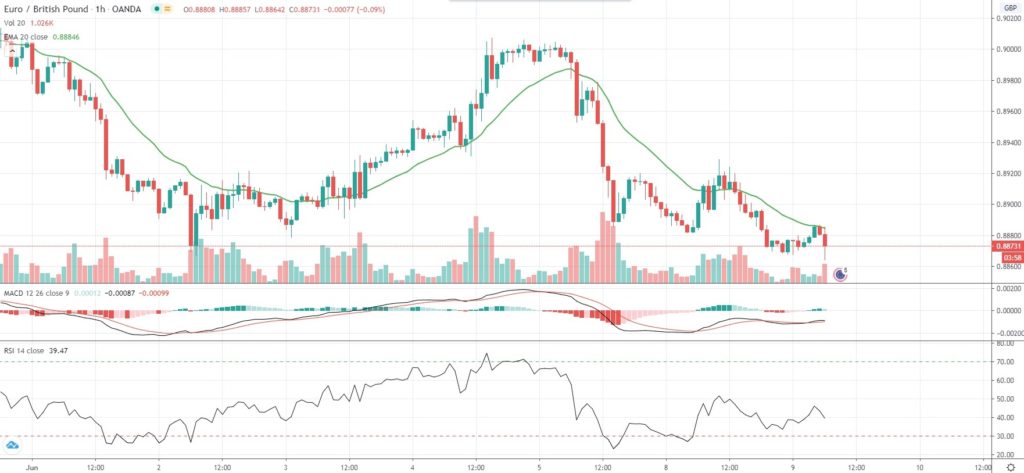EUR/GBP extended losses from the previous two trading days during the early European session on Tuesday, slipping to lows not seen in a bit over 3 weeks, after Germany’s Federal Statistical Office reported the smallest trade surplus since December 2000 in April.
Germany’s trade balance surplus shrank to EUR 3.5 billion in April from EUR 17.8 billion in April 2019, as a slump in exports outpaced a drop in imports amid the coronavirus pandemic. Germany’s total exports plunged 31.1% in April, as shipments to the European Union dropped 11.0% and those to third countries went down 27.0%. Total imports shrank 21.6% in April, as purchases from the European Union registered a 30.1% slump and purchases from third countries dropped 11.4%.
German seasonally adjusted trade surplus narrowed considerably to EUR 3.2 billion in April, as exports went down 24% and imports decreased 16.5%. A consensus of estimates had pointed to a lesser drop to EUR 10 billion.
A separate report revealed a larger-than-anticipated trade deficit in France in April – EUR 5.0 billion, following a trade gap of EUR 3.2 billion in March.
As of 6:58 GMT on Tuesday EUR/GBP was inching down 0.04% to trade at 0.8873, after earlier touching an intraday low of 0.8864, or a level not seen since May 15th (0.8829).
In terms of economic calendar, the third estimate of the Eurozone’s Gross Domestic Product for Q1 probably confirmed the first two estimates, according to expectations. Economy is expected to contract at an annualized rate of 3.2% in the first quarter of 2020, following a 1.0% growth in Q4 of 2019. On a quarterly basis, Euro area GDP is expected to shrink 3.8% in Q1, again confirming the first two estimates. It would be the sharpest contraction rate since comparable series were initiated in 1995. The final data by Eurostat will be released at 9:00 GMT.
At 14:30 GMT Bank of England Deputy Governor, Financial Stability, and Monetary Policy Committee member Jon Cunliffe is scheduled to speak at Investment Association webinar.
Bond Yield Spread
The spread between 2-year UK and 2-year German bond yields, which reflects the flow of funds in a short term, equaled 62.5 basis points (0.625%) as of 6:15 GMT on Tuesday, down from 62.7 basis points on June 8th.
Daily Pivot Levels (traditional method of calculation)
Central Pivot – 0.8892
R1 – 0.8914
R2 – 0.8951
R3 – 0.8973
R4 – 0.8995
S1 – 0.8855
S2 – 0.8833
S3 – 0.8796
S4 – 0.8759






